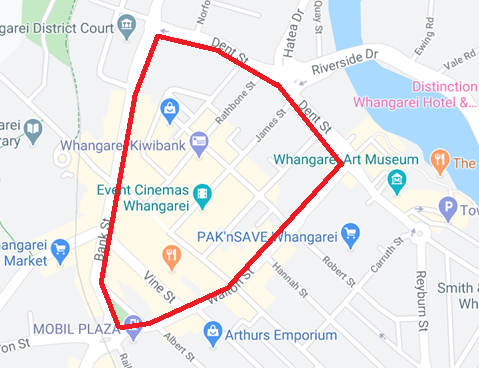Phone Vince on: 021 438 952
Roads, are they for Pedestrians or Vehicles?
Roads, are they for Pedestrians or Vehicles?
Not many years back, you could say that roads were generally created for vehicles, and further back you could say for horses. Todays urban designers are going right back to the basics and saying roads are there to get you from one place to another, and it doesn’t matter what mode you use, horse, foot or wheels! The question is, can all these co-exist in the same spaces?
So, let us look at good Urban design.
Good Urban design means that you are thinking about how Cities or Town Centres are laid out and how do “you” get from point A to point B. Urban Designers are also including environments, which are both environments that we travel and work in, and environments that are within ourselves (by this I mean our own personal environment and what we are dealing within our own lives). Their question is - how design can improve our overall environment including our wellbeing.
When a city was created in the past, they generally would put a post office and a bank in the centre and work outwards as everyone had to post a letter and were required to go to the bank to do transactions. In today’s terms emailing or messaging is now the preferred way to communicate and doing bank transactions online is now the new norm. If a town or City was to be created today what would be the building at the centre? Most large new shopping complexs have a supermarket as their anchor tenant, and hence from that other shops are added.
So, is it time to relook at the design of Whangarei’s City and CBD? Presently Whangarei has a CBD which is approx. 166,000m2 in area, which includes 839 public carparks and 23 disabled carparks, 11,500m2 of public green spaces and approx. 450 of individual shops, accommodation places and/or vacant lots. When compared against a typical shopping centre like Westfields Albany which is 53,325m2 in size, and has 2,373 carparks for 146 shops. You start to question which is easier to get to? Which is the more inviting?

Whangarei’s CBD is recognised as the area that is included within Bank Street, Dent Street and Walton Street.
The Whangarei District Council has just received awards for their Central City Revitalisation Plan, (http://www.wdc.govt.nz/NewsRoom/Latest-News/Pages/City-core-award.aspx). This plan was developed over the past 2 years, and now the Whangarei District Council has started producing the “Whangarei Complete Streets Masterplan”. This Masterplan is trying to take all the aspects of good urban design and provide workable flow paths, which means changing traffic flow and intersections for the inclusion of pedestrians and pedestrian interactions. Has the common vehicle been forgotten?
The Whangarei District Council Masterplan shows that there are plans to remove three roundabouts within Whangarei and turn them into Traffic Lights, it also shows that the number of carparks within the CBD is being reduced, and it shows that additional traffic lights will be installed along Walton and Dent Streets, and planting along both sides of the streets within the CBD. These are all nice things which help good interactions, however has the shopper been forgotten?

Proposed Whangarei District Council Masterplan overview.
Over the next few months your Councils will be discussing Long Term Plans, Growth issues, and trying to work out what is happening with Tourism and the economy within the districts.
Does the Whangarei District Council have it right with their Master Plan? Do more traffic lights need to be added to allow people to cross the street? There have been studies that have shown that the average person will only walk 150 to 300m from their vehicle to do shopping. As an example: if you shop at the Warehouse in Okara Whangarei then at Countdown Okara, do you move your car? So how much public carparking is required? As stated above the Council is planning to reduce the number of on street public carparks within the CBD by 80, there is also an additional reduction of around 200 carparks in the surrounding areas where Council is turning carparking into green space.
As stated above good Urban Design means including all modes of transport, and due to the number of individual owners within the CBD, getting cohesion means that the only thing Council can really affect are the roads, footpaths and intersections, typically the Council owned assets. Does this mean that Council needs to purchase more land so that they can do more with it? Or does it mean the Council should force more rules on the property owners to make things work? The latter tends to imply that Council is leaning towards a dictatorship and I can well understand why some property owners could feel that way right now, however is that the best way to redevelop a dying CBD?
On Wednesday the 15th of July 2020, the Whangarei District Council will unveil their “Complete Streets Master Plan” to the Northland Chamber of Commerce, so if you are interested book your place to find out more. https://www.northchamber.co.nz/event/wdc-complete-streets-masterplan-presentation/
For me, I was disappointed in this Master Plan, as I felt that the shopper was forgotten, for it is business transactions that keep the district growing. In my experience if we want our CBD to develop and grow, we need to remember that Northland is a vast district, and typically people travel by vehicle to get anywhere. This doesn’t mean that we forget the pedestrian. What I am saying is that we need to make sure that the common pedestrian is safely interacting with their surrounds, and the safe way to do that is to focalise the vehicles to one location, and to have as least possible vehicle/pedestrian interactions.
Personally, I would like to have seen, increased carparking, and if we were to look at the ratio of carparking to shops, Albany has a ratio of 16:1, then Whangarei would need to have 7314 carparks for its CBD. This might seem a little excessive, however if we have a CBD the size of Whangarei and include the number of shops and the typical distance people walk, then that is how many carparks are needed to service Whangarei’s CBD. Should Whangarei setup a mall structure, like Albany, in the middle of the CBD? Or should Whangarei do something different? What is more important to you, the economy or a pretty place or can Whangarei have both?
END



